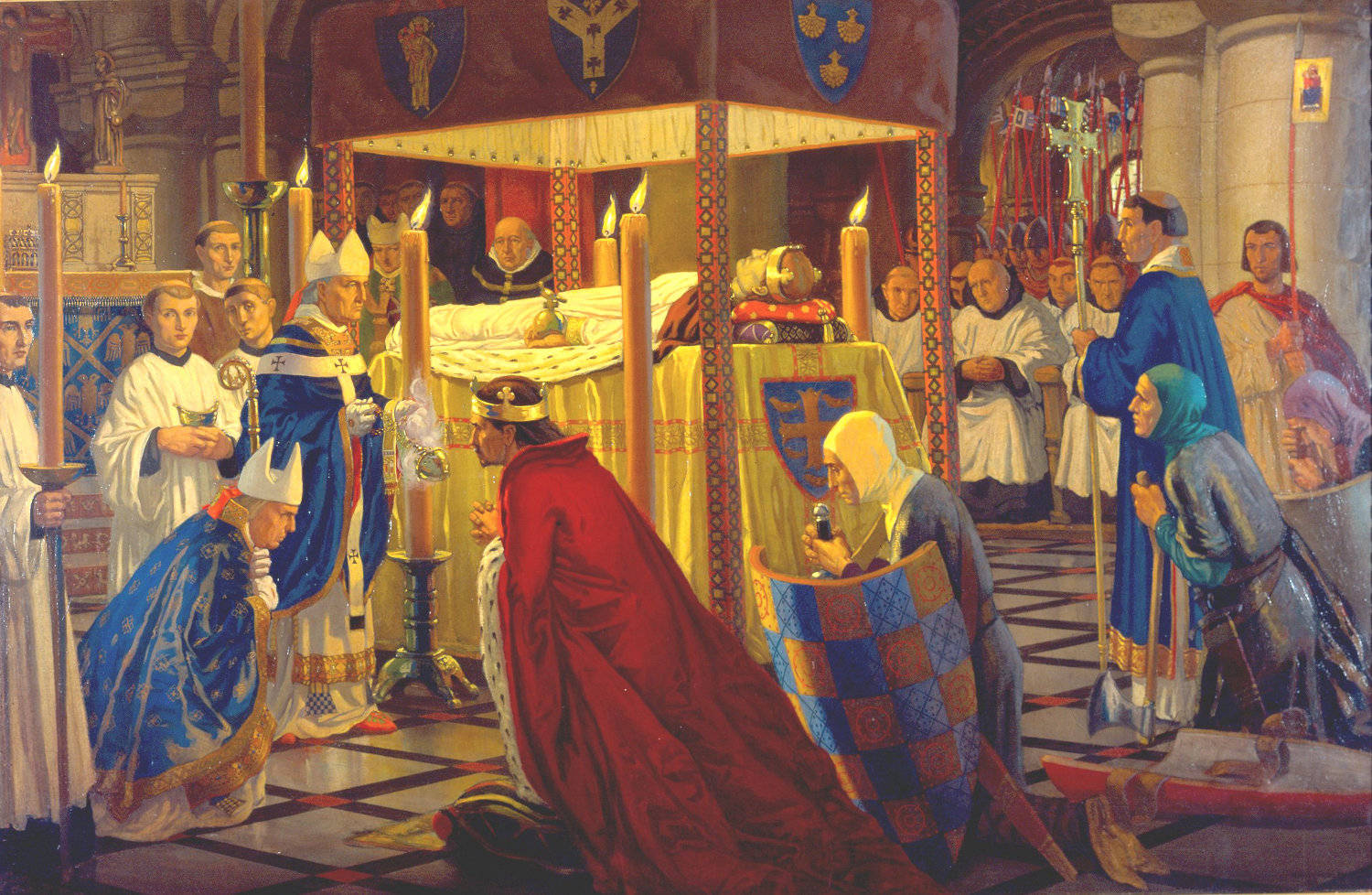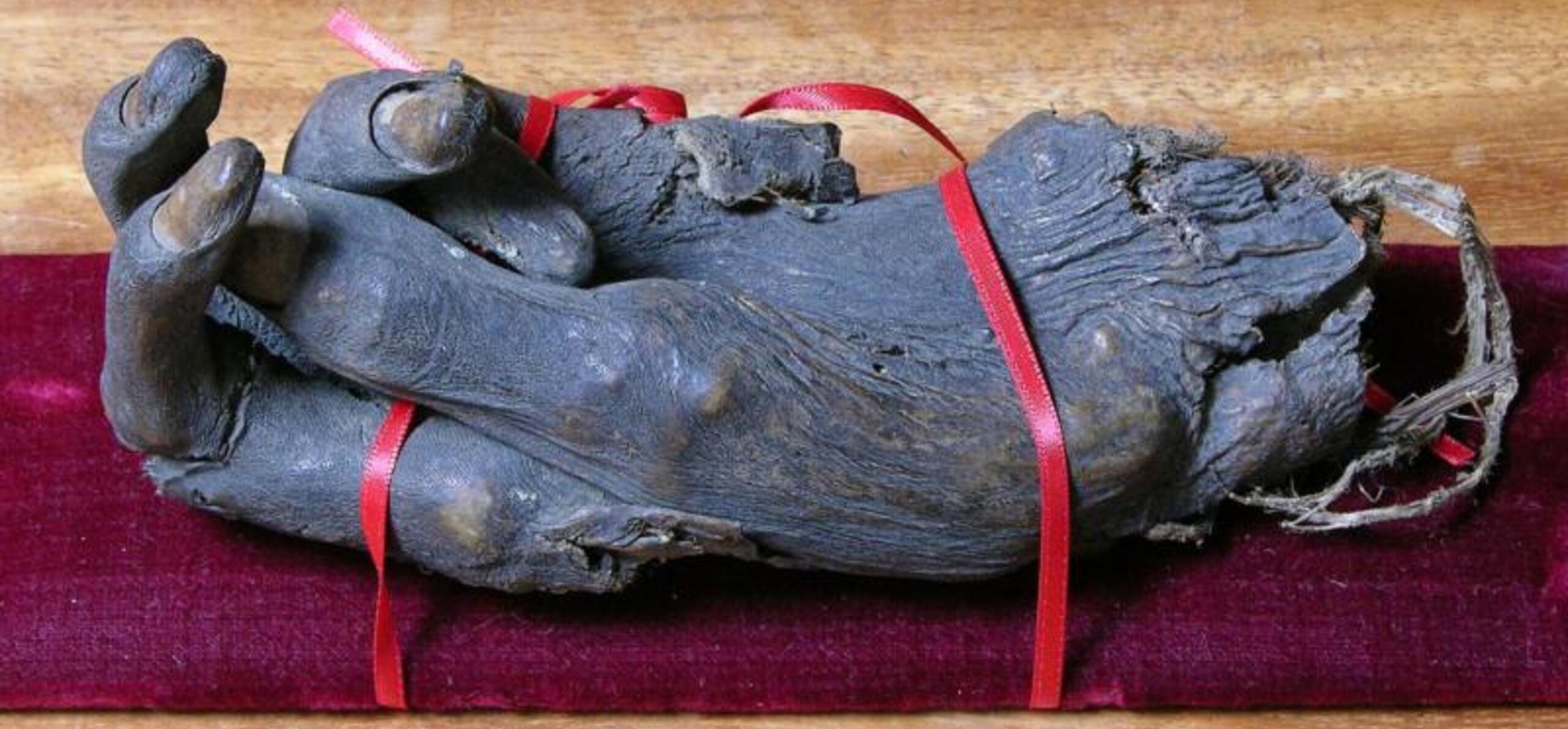Dr Ron Baxter, Director of the Corpus of Romanesque Sculpture in Britain and Ireland
Relics, physical souvenirs of dead saints can seem by turns ghoulish and comic to the modern mind, but they were a vital element in the spiritual life and economy of the Middle Ages. When King Henry I founded Reading Abbey to be his burial church, he set about acquiring a large collection of saintly relics that would attract pilgrims who would venerate the relics and contribute to the economy of the abbey and the town.

Harry Morley, The Burial of Henry I, 1136. Reading Museum
In an invaluable document, now in the British Library, the relics at Reading are catalogued according to a strict system based on their perceived holiness; beginning the most important, the relics of Christ. This included fragments of the True Cross, Christ’s sandal, his foreskin (one of 17 held by various churches in the Middle Ages!), and pieces of bread left over from the ‘Feeding of the Five Thousand’. The list then turns to the Virgin Mary, the mother of Christ; a hair from her head, pieces of her tomb etc. We then get relics of Old Testament prophets, the Apostles, and male and female saints. A glance at the list is enough to show that the abbey was obtaining its relics from Constantinople (at the hands of the King) and from many abbeys and cathedrals in England. What is also obvious is that collection grew very quickly: the inventory was complete by around the year 1180, so that within 60 years of the foundation of the monastery, it had obtained a collection of more than 230 pieces of bone, dust, wood and bloodstained fabric.
The most famous relic, of course, was the Hand of the apostle, St James the Great, given by Henry I’s daughter the Empress Matilda, probably in 1133. Matilda inherited it on the death of her husband, the Emperor Henry V, and it ultimately came from an arm taken from the grave of the apostle by the Bishop of Altino in the 4th century. This relic possessed powerful healing properties, performing miracle cures throughout the twelfth century. It was still at the abbey when Thomas Cromwell’s commissioner made a visitation on the eve of the Dissolution, after which it disappeared from sight. Then, in October 1786, workmen digging the foundations for the new Reading Gaol discovered a left hand hidden in a wall at the east end of the abbey church. By 1897 this hand had found its way to the Roman Catholic Church in Marlow, Bucks, where it remains to this day.
Relics are unprepossessing objects – bits of bone, hair and fingernails, pieces of bloodstained cloth, and even stones and earth from places of biblical significance, like the stones from the Wilderness where Christ fasted, and the earth from the place where the Virgin was born, both of which were in Reading’s collection. It was usual, therefore to house these precious memorials in rich and appropriate shrines. We know, for example, that the Hand of St James was housed in a case shaped like an arm, similar to the gilt and bejewelled Arm Reliquary of St Pantaleon, because an image of it appears on the seal of Abbot Adam of Lathbury (1226-38). Likewise, pieces of the True Cross were often displayed in crosses, and Christ’s sandal could well have been displayed in a similar way to that of St Andrew now in the Cathedral Treasury at Trier.
Relics were not simply collected through the love of collecting (although there was surely an element of that). Their purpose was to attract pilgrims who would make offerings, buy souvenirs (usually ampullae; lead or pewter bottles filled with holy water that had been in contact with the relic), and generally contribute to the economy of the town and the abbey. The sheer quantity of relics at Reading, and their variety, combined to make the abbey a holy place, inhabited, in some sense, by the saints whose remains it held.
Further Reading
You can find out more about Reading Abbey pilgrimage and relics in Ron Baxter (2016) The Royal Abbey of Reading, The Boydell Press





